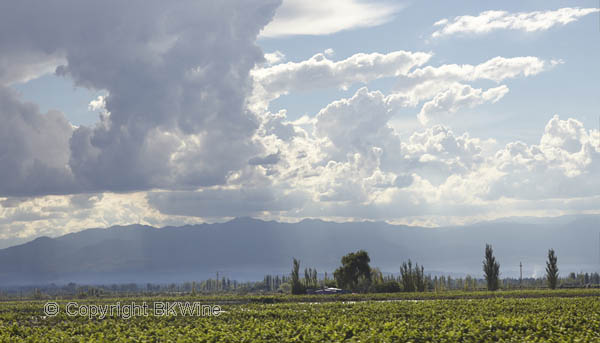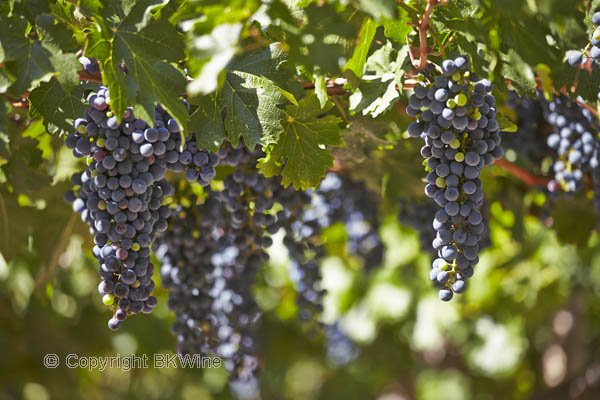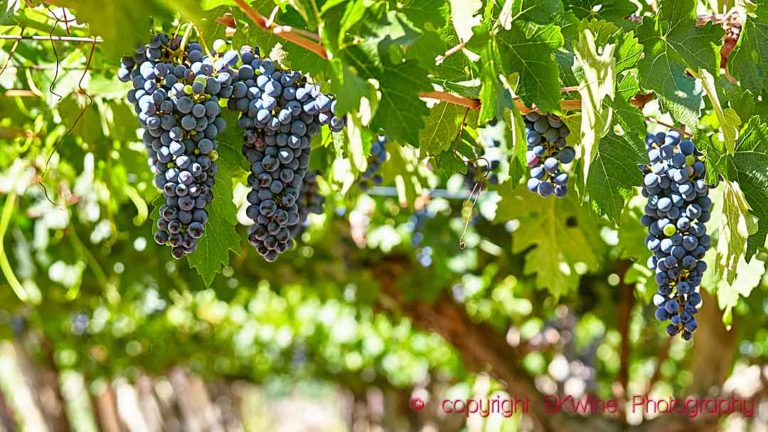If you do not have your ear to the (wine) ground, it can be easy to miss the rapid development that Argentina’s wine industry has undergone in recent decades. From having appeared on the world wine scene in the early 90’s as a supplier of decent entry-level wines it has today become a full-fledged producer of world-class wines, but still often moderately priced. BKWine Magazine’s reporter Mikael Karlin met Madeleine Stenwreth MW to find out how this rocket-speed development occurred and where Argentina is heading today.
Your correspondent had the opportunity to ask some questions to Madeleine Stenwreth, who wrote her MW essay on the theme of the importance of altitude in Mendoza’s vineryard (”The effect of altitude on malbec in Mendoza”), and received the Quinta do Noval Award for it as that year’s best paper.
Part 1 of a series of two articles about Argentina’s wines. In part two, we talk about some ground-breaking wines from Argentina.

When did the wine industry in Argentina start to be noticed outside the country?
“Argentina started exporting wine in earnest in the mid-90s, when the domestic consumption fell from 41 litres per person in 1996 to 29 l / person in 2006 (source: INV). Above all, a 300% devaluation in 2002 led to that export volumes could increase rapidly with existing wine.”
“Also in the mid-2000s vineyards began to adapt their production to the different export countries to continue to export affordable quality wine when the first enthusiasm of cheap wine began to slow down.”

What has changed in recent years and what can we expect to see more of in the coming years?
“Argentina has undergone tremendous development in just the last ten years, which also accelerated the past five years. Of course, it is following the since there are all types of climate zones where you can grow wine in the country. More cautious barrel treatment is an easy trend to follow, it just means buying fewer French oak barrels. ”
“There is also a development of wines made from “famous” grapes such as cabernet sauvignon and chardonnay and lesser-known grapes such as cabernet franc and tannat. Quality wines from chardonnay in more cool climate style from eg higher altitudes, over 1000 m, in Mendoza at comparatively moderate prices. ”
“Cabernet Sauvignon from Luján de Cuyo grown on an altitude of 850-1000 m or Valle de Uco at an altitude of 1000-1200 meters have the potential to become a serious competitor to California’s top wines, with a much better value for money.”
“Cabernet franc, which represents only about 1% of all red grapes, makes exciting wines in eg both cuvées (ed. note .: the word to used for blends of different grapes) and single variety wines from Mendoza and Cafayate. Both cabernet grapes, however, require more of the grower in the vineyard than malbec.”
“Tannat, also about 1% of all red grapes, gives, for example, a single variety wine at Cafayate or San Juan that is quite unlike a wine from Madiran. The fruit is softer and clearer with violet tones, while the tannins are silky and elegant so it can be enjoyed immediately but can also be aged. ”

What do you see as the biggest challenges to Argentina’s wine industry?
“The export success in the US and UK and soon in China for easy-drinking malbec wines is both a blessing and a danger to Argentina’s wine industry. The danger is that the producers become lazy and comfortable and keeps prices high while taking shortcuts on quality. Then the same thing can happen that happened to the Rioja wines in Sweden in the early 90s, namely that consumers stopped drinking Rioja wines after a couple of bad vintages with increasing prices. ”
“It has been historically proven many times in all industries that success can breed comfort and a reliance on that the success will continue forever. A strong demand for a certain type of wine can also lead to importers push wineries to deliver “customized” wines. These wines may not have a quality that is sustainable from both the producer’s and the consumer’s point of view when the boom subsides. This may be about to happen to appassimento for Italian wines in Sweden. ”
“For the winery it becomes a dilemma between being faithful to its origins and its long-term quality potential and to maximize profits when there is an opportunity in the short term. I think Argentina has generally been able to follow up on the malbec boom with wines in the higher price range of exceptional quality, say 10-30 euro, but the risk is real and it is the challenge they face. ”
Your correspondent thanks Madeleine Stenwreth for these insights and continues in the next part with an Argentinean producer who really succeeds in showing the diversity and creativity of today’s Argentina.
Mikael Karlin writes för BKWine Magazine on wine tastings and wine events in Sweden.
[box type=”info” style=”rounded” border=”full”]The wines of Argentina have undergone a breath-taking development in recent decades. The best way to experience this revolution is on site; you can see it for yourself at close range on the wine tour to Argentina and Chile with BKWine.
Travel to the world’s wine regions with the wine experts and the specialist on wine tours.
Wine tours that will be a memory for life. BKWine wine tours.[/box]








2 Responses